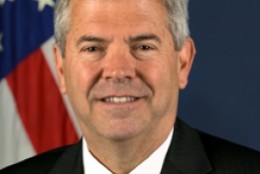Shared Services
-
The Unified Shared Services Management Office at GSA released a new 10-year vision for federal back-office shared services that relies on a subscription or as-a-service model to deal with the needs for upfront spending.
December 09, 2016 -
The government has made progress in the last 15 years, but it's nowhere near a fully digital model.
October 26, 2016 -
The Modernization Government Technology Act received approval from the Oversight and Government Reform Committee on Sept. 15 and will likely get voted on by the full House on Sept. 20.
September 19, 2016 -
Strategic sourcing is the government's strategy for trying to buy commodities as a single entity. Industry, and especially small business and services contractors, have been wary of the initiative. Now the Federal Acquisition Regulation Council has issued a new rule for contracting officers and that's also got industry concerned. Alan Chvotkin, executive vice president and counsel of the Professional Services Council, joins Federal Drive with Tom Temin to explain what's going on.
August 31, 2016 -
Beth Angerman, the executive director of the Unified Shared Services Management (USSM) Office, said the modernization and migration management (M3) framework, a new six-step playbook and a shared services catalog are putting the pieces in place to help agencies succeed in moving back-office systems to shared services.
August 24, 2016 -
Even after transitioning four systems to shared services, the Department of Housing and Urban Development still doesn't have what it needs. All this is documented in the latest study from the Government Accountability Office. Valerie Melvin, director of Information Management and Technology Resources issues at GAO, shares more on Federal Drive with Tom Temin.
August 16, 2016 -
President Barack Obama signed the MEGABYTE Act into law, and GSA released two new shared services offerings to keep the “slow” summer months hopping.
August 08, 2016 -
A third memo from the administration since 2009 is pushing agencies to consolidate, optimize and move data centers to the cloud.
August 03, 2016 -
Chuck Sackley, a senior vice president, North America industry sales verticals at Unify, makes the case that technologies such as cloud and VOIP is making it easier to update agency networks.
July 05, 2016 -
Roberta J. Mourao is a principal in the Advisory Services practice of Ernst & Young LLP. Her experience spans the government sector and commercial industry in the areas of business process improvement, enterprise transformation, strategy and…
June 06, 2016 -
Federal shared IT and other services make all the sense in the world. So why aren’t more agencies doing it? And what will it take to expand use of shared services?
June 02, 2016 -
The Office of Management and Budget released a new memo May 4 formalizing existing initiatives and creating new efforts to help agencies move to shared services more easily.
May 04, 2016 -
John Hill, the Bureau of Fiscal Service’s assistant commissioner for payments and chief disbursing officer, said agencies are getting ahead of the OMB deadline to move to electronic invoice processing by 2018 by moving to the Invoice Processing Platform (IPP).
April 13, 2016 -
Better cost data will help agency CIOs make more informed decisions about moving to newer, more cost effective IT solutions, said Richard McKinney, the Transportation Department's chief information officer.
February 03, 2016 -
Your mother always told you it was good to share. For federal agencies, shared services are a route to greater efficiency, less wasted effort and maybe even better performance. So why aren't more agencies doing it? Now the Partnership for Public Service, teaming with Deloitte, has come up with a list of recommendations for agencies to get into shared services for human resources and acquisition. Mallory Barg Bulman, research director at the Partnership, joins Federal Drive with Tom Temin with more detail.
January 27, 2016














